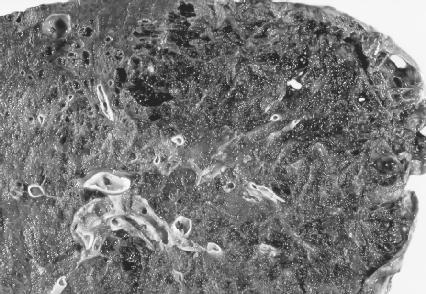Emphysema - Diagnosis
The symptoms of emphysema are obvious. However, they are similar to the symptoms of other respiratory disorders. A major goal of diagnosis is to eliminate other possible causes of the patient's symptoms.
A first step in diagnosis is a medical history. A doctor will determine if there are factors in the patient's background that might suggest emphysema. Smoking is the most obvious of these factors.
A physical examination can provide further information. A doctor may listen through a stethoscope as he or she taps on the patient's chest. A clue to the presence of emphysema is a hollow sound produced by the tapping.

The hollow sound is caused by the large air sacs that develop as a result of emphysema.
A pulmonary function test may also be conducted. A pulmonary function test involves measuring the amount of air a patient can breathe in and out. That amount is measured against the amount that a healthy person can breathe. The test tells whether the person has emphysema and, if so, to what extent it has developed.
As the disease develops, an X ray can be helpful in making a diagnosis. The X ray may show expansion or stretching of the lungs. The position of the heart may change, or blisters may show up on the lungs. Muscles around the lungs may also appear larger.
Late in the disease, an electrocardiogram (pronounced ih-LEK-tro-KAR-dee-uh-gram) may show progress of the condition. An electrocardiogram measures electrical activity of the heart. As the heart is stressed by the patient's efforts to breathe, changes in electrical activity may begin to show up.

Comment about this article, ask questions, or add new information about this topic: